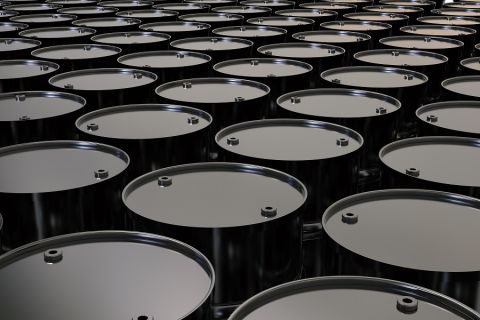
In early March, a New York bankruptcy court ruled that Sabine Oil & Gas Corp.’s gathering contracts with an affiliate of Cheniere Energy Inc. could be rejected and Sabine would be free to pursue other options. In the short term, this ruling is nonbinding and even the judge recommends the parties find a commercial solution instead of resolving the issue in court.
The market soured. Despite the resulting panic—the Alerian MLP Index (AMZ) traded down 6.1% that day—this ruling affects only these specific contracts and these specific companies, none of which are in the AMZ, under a specific Texas state law.
There are a variety of midstream contracts and contract structures. This ruling concerned minimum-volume commitments that Sabine did not have the production to fulfill. Even if this is the only decision of its kind solely involving gathering companies and no legal precedent is set (a matter we’ll leave to the lawyers), investors are now less than 100% confident in the sanctity of midstream contracts, and uncertainty is the enemy of premium valuations. What happens to contracts in case of bankruptcy will be one more question investors ask before investing; it’s a layer of concern unfathomable even a few years ago.
Contract questions
The Alerian Index did have a minor bounce the following day, gaining 0.8%. Even when the technical pressure ends and the energy cycle turns, there is a part—admittedly, perhaps a very small part—that will never recover due to the perception that contracts are no longer sacred. An efficient market would naturally account for this added risk, should another downturn occur.
This should only affect those companies contracting with producers and will further vary by state. Demand-pull contracts, such as using pipelines that supply utilities, are theoretically uncompromised.
Aside from perception, every bankrupt (or nearly bankrupt) producer will now try to use this decision as leverage, whether in bankruptcy court or simply in renegotiation attempts. In the next year or so, the industry may find that the previously symbiotic relationship between producer and midstream provider is less so when one of those parties is in distress. Producers may be less interested in signing long-term contracts, and the general counsels of midstream companies will be busy figuring out how to edit their form service agreements to mitigate the risk of contract rejection in the event of a producer bankruptcy.
Midstream service fees will likely also rise for non-investment-grade customers.
Valuation concerns
Further out, when (and if) the IPO market returns, the valuation concerns will return. An E&P company looking to increase shareholder value by creating a drop-down gathering and processing MLP will have to answer considerably more questions about the strength of its midstream contracts.
Even with an investment-grade rating, the producer will have to explain what happens to that new MLP in case of sponsor bankruptcy, and an insufficient answer will likely result in a lower deal price.
Chapter 11 bankruptcy is designed to maintain the current business, and producers cannot profit from their hydrocarbons without a midstream provider to take the oil or gas to a market. All the same, this small decision has cast a near-term shadow over the industry.
Recommended Reading
US Gulf Coast Heavy Crude Oil Prices Firm as Supplies Tighten
2024-04-10 - Pushing up heavy crude prices are falling oil exports from Mexico, the potential for resumption of sanctions on Venezuelan crude, the imminent startup of a Canadian pipeline and continued output cuts by OPEC+.
What's Affecting Oil Prices This Week? (Feb. 26, 2024)
2024-02-26 - Stratas Advisors forecast that global crude production will be essentially unchanged from 2023, which means that demand growth in 2024 will outpace supply growth.
US Oil Stockpiles Surge as Prices Dip, Production Remains Elevated
2024-02-14 - EIA reported crude oil stocks increased by 12.8 MMbbl as February began, far outstripping expectations.
Oil Broadly Steady After Surprise US Crude Stock Drop
2024-03-21 - Stockpiles unexpectedly declined by 2 MMbbl to 445 MMbbl in the week ended March 15, as exports rose and refiners continued to increase activity.
Oil Dips as Demand Outlook Remains Uncertain
2024-02-20 - Oil prices fell on Feb. 20 with an uncertain outlook for global demand knocking value off crude futures contracts.


